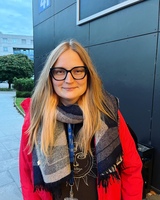M.Sc. Laura Serksnyte

- Telefon
- +49 89 289-14344
+49 89 289-14356 - Raum
- –
- laura.serksnyte@tum.de
- Links
-
Visitenkarte in TUMonline
- Arbeitsgruppe
- Dichte und seltsame hadronische Materie
Lehrveranstaltungen und Termine
| Titel und Modulzuordnung | |||
|---|---|---|---|
| Art | SWS | Dozent(en) | Termine |
|
Übung zu Kern-, Teilchen- und Astrophysik 1 eLearning-Kurs Zuordnung zu Modulen: |
|||
| UE | 2 |
Chizzali, E.
Königstorfer, S.
Lesch, M.
Mahlein, M.
Mantovani Sarti, V. … (insgesamt 8)
Leitung/Koordination: Fabbietti, L. |
Termine in Gruppen |
|
FOPRA-Versuch 75: Teilchenphysik am Computer (KTA) aktuelle Informationen Zuordnung zu Modulen:
|
|||
| PR | 1 |
Serksnyte, L.
Leitung/Koordination: Fabbietti, L. |
|